- Kia ora
- Christmas and New Year shutdown
- New footpath in Ōtaki opens for the holidays
- Tamanui te ra under Ōtaki Gorge Road Bridge
- We're seeking your ideas for a time capsule
- Upcoming construction milestones
 Kia ora
Kia ora
As this will be the last issue of Express Connect for 2021, I’d like to start by acknowledging the fantastic support we’ve received from the community throughout the year. We recognise that a large and complex project like this can affect people’s lives in many different ways, so on behalf of the PP2Ō team, a huge thanks to all of you who have been with us since the beginning of this journey.
2021 has been a great year for the PP2Ō Expressway project and, as I mentioned in the previous newsletter, a lot has been achieved despite the delays and restrictions caused by the COVID-19 Alert Levels. We’re now looking forward to sharing with you what will hopefully be another successful year ahead.
I wish all of you a very happy Christmas and New Year. Hopefully you’ll take time out to get together with family and friends and enjoy the holiday season, as well as the start of a New Year.
Please travel safely over the coming weeks, be courteous, share the road with others and schedule frequent breaks so you remain alert when driving during these particularly busy times on the road.
If you need any further information, please visit our website www.nzta.govt.nz/pp2o(external link), call us on 0800 PP2O INFO or email pp2o@nzta.govt.nz.
Ngā mihi,
Chris Hunt, Project Director
Christmas and New Year shutdown
Over the Christmas and New Year holiday, the project team will stop construction work and our last day on site will be Tuesday 21 December with work starting up again on Wednesday 5 January. If you need to contact the team during the break, please ring 0800 PP2O INFO or email pp2o@nzta.govt.nz. For emergencies, please call the Police on 111.
New footpath in Ōtaki opens for the holidays
The small section of footpath at the northern end of the project area, between Rahui Road and the Ōtaki Rail Station, has opened this month for pedestrians and cyclists to enjoy just in time for the Christmas holidays!
The new footpath is approximately 365 metres long and runs along Bridge 4 (Rahui Road Bridge), parallel to the train tracks heading towards the rail station in the town centre.
It’ll be a fantastic asset to the local community providing a safe space for pedestrians, cyclists, young families with children biking to town and the increasing number of kiwis who are choosing new forms of transport such as e-scooters.
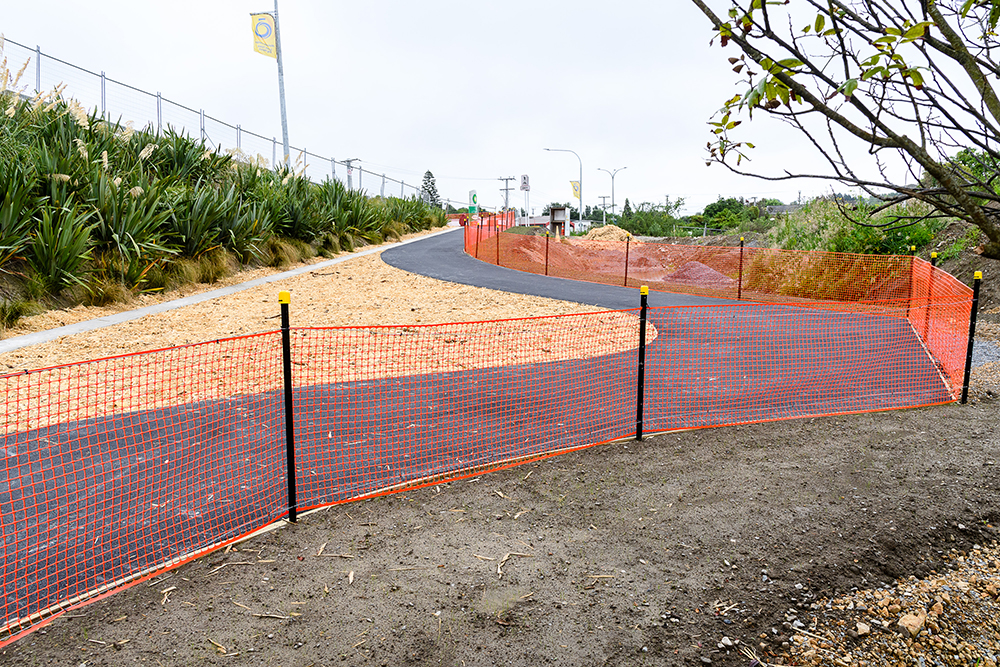
The newly-opened footpath at the northern end of the project area.
Tamanui te ra under Ōtaki Gorge Road Bridge

Heading north along the new Expressway as you go under Ōtaki Gorge Road Bridge (Bridge 7), you’ll see Tamanui te ra - artwork on the bridge panels. They are an acknowledgement of the region’s relationship with agriculture.
To the left is Tamanui te ra (Great son of the sun) whose rays represent the ropes used by Maui to slow its path. In the centre, surrounded by tata (spades) and taewaa (an early Māori implement used for cultivating root vegetables), is Te Tuarātapu-o-Te Rangihaeata (the Tararua ranges) providing water from its awa (rivers and streams) to the plants below. To the right is a more modern day symbol of agriculture, a tractor and its tread.
In the Māori creation story, Haumia-tiketike is the god of all uncultivated crops and his brother Rongo, who is usually associated with kumara, is the god of all cultivated crops. Haumia-tiketike and Rongo are sons of Papatūānuku (Mother earth) and Ranginui (Sky father). At the beginning of the world, Papatūānuku and Ranginui held each other in a loving embrace which unfortunately meant that the world and their children were kept in complete darkness. Eventually, some of their children decided to end the darkness by separating their parents. After a few failed attempts, their son Tane - often referred to as Tane Mahuta, the God of the Forests - stretched up his arms and managed to separate them.
Another son, Tāwhirimātea (God of storms) was so angry at the separation of his parents by his brother Tane, he went on a bit of a tirade. Papatūānuku hid Haumia-tiketike and Rongo from the stormy wrath of Tāwhirimātea in her bosom. It’s said that when they hid however, the leaves and plants which were the hair and descendants of Haumia-tiketike and Rongo were sticking up through the earth. This allowed another brother, Tumatauenga (God of war) to find them. Tumatauenga believed that both of them had betrayed him by not helping him fight Tāwhirimātea. As a result, Tumatauenga harvested the foliage with a wooden hoe and devoured them as an act of vengeance. In the meantime, Tāwhirimātea had become so angry with the separation, he plucked out his own eyes and threw them to the sky, where they became stars and constellations including a star cluster known by Māori as ‘Matariki’. Traditionally Matariki has been a time of preparing garden beds and planning planting for the year ahead.
The Ōtaki and Te Horo region has been synonymous with agriculture thanks to its abundance of fertile land. While it was common practice to grow food to barter for other goods, Ngati Raukawa worked with early settlers to identify an opportunity to harvest wheat and flax. Both products were in high demand and could be kept for long periods if necessary.
In the 1880’s, Wellington’s population began to boom and a railway line between Ōtaki and Wellington was built, providing a necessary means of transporting fresh produce to the Wellington market. As the market grew, a number of Chinese-run market gardens were established in the area and, following World War 1, returned servicemen were trained in horticulture in a government-owned market garden on Mill Road.
Improved road and train services allowed Ōtaki to respond to demands and the introduction of plants such as the Ōtaki Pinks (carnation) and Sweet Ōtaki Violet saw the region supplying florists nationwide and established the region’s reputation for agriculture.
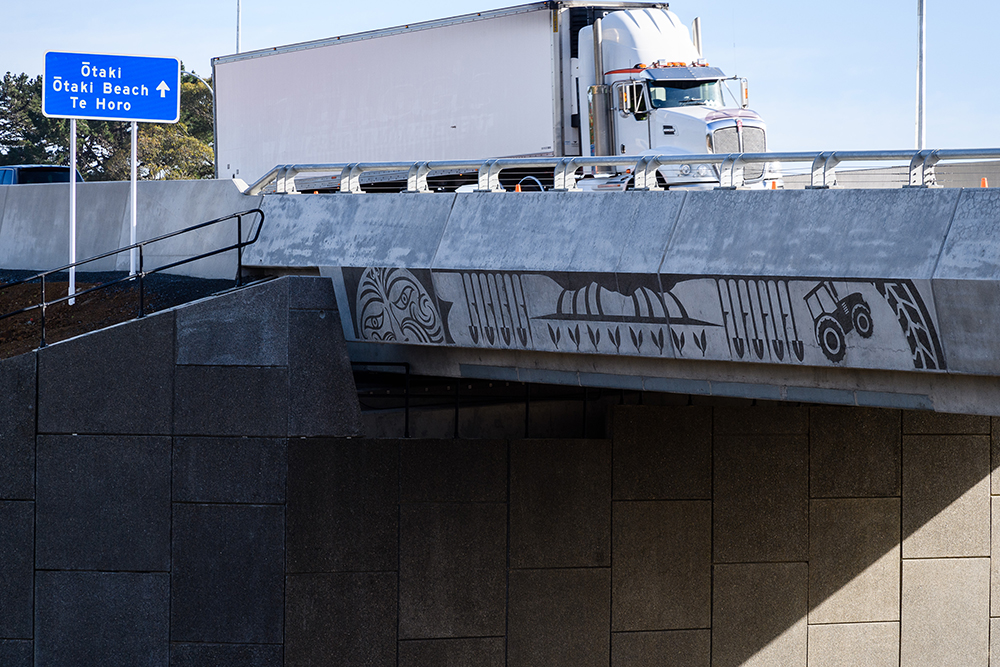
Bridge 7 - Ōtaki Gorge Road.
We're seeking your ideas for a time capsule!
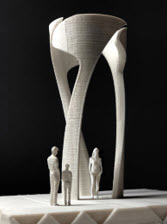
Submissions are open for items to be placed in the time capsule.
Much of what we know about our history has come from artefacts that tell stories of our ancestors. If you could leave a piece of Ōtaki to be discovered by future generations – what would it be?
PP2Ō is seeking ideas for items to be included in a time capsule which will be placed underneath one of the Interchange Gateway Sculptures (gifted to the community as part of the project). The time capsule theme is ‘Your Ōtaki – what Ōtaki means to you’. This includes contemporary views, historic documents and artefacts that provide insights into how Ōtaki came to be, the place it is today and what it means to the community.
Anything placed in the time capsule must be dry and non-perishable, so items made from materials like paper, plastic and glass may work best. “Think broadly” is the request from the project team.
If you would like to submit an item to be considered for the time capsule, please email pp2o@nzta.govt.nz.
Upcoming construction milestones
Northern area update
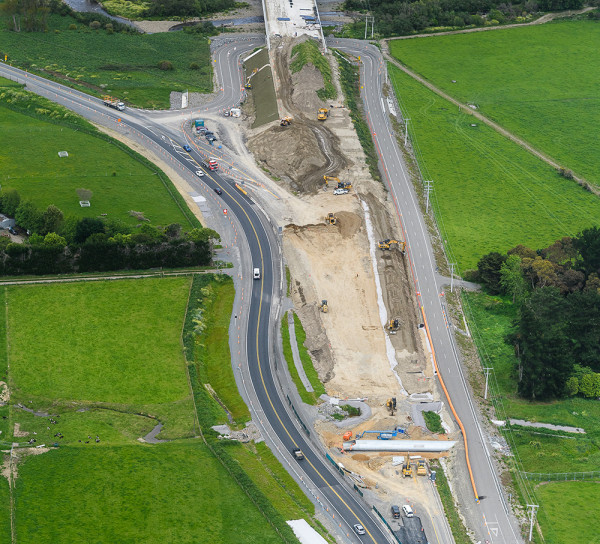
Commence expressway sub-base construction north of Bridge 1 (Waitohu Stream Bridge) around early – mid February 2022. This is a layer of aggregate mixed with cement that forms the first layer of the pavement.
Central area update
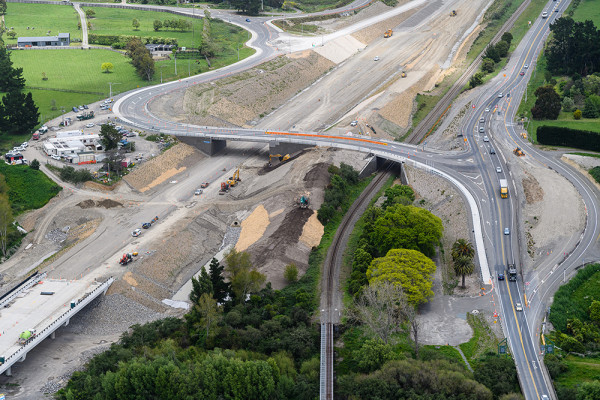
Commence the last of the expressway sub-base construction between the Ōtaki River Bridge and the southern interchange on and off ramps in late January – early February 2022.
Southern area update
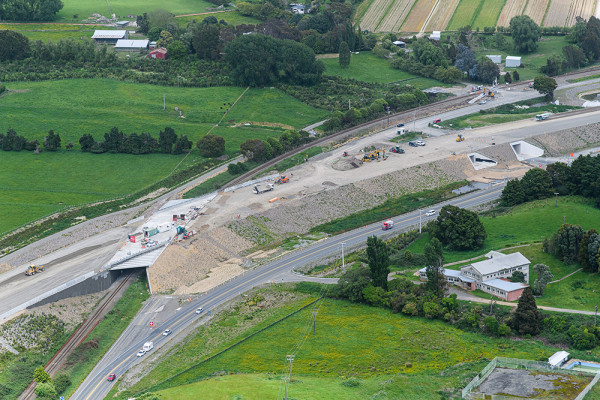
Complete laying of asphalt between Bridge 9 (Makahuri Rail Overpass) and the southern Peka Peka tie-in by the end of February – early March 2022.